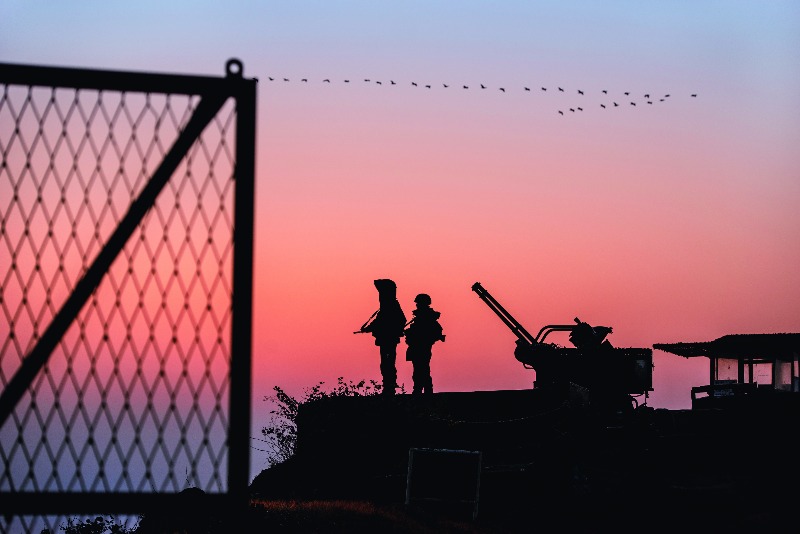Springtime in the 1960s. A young soldier stationed at the Demilitarized Zone, or DMZ, I would make my way to a barren riverbank nearby to lose myself in the dazzlingly beautiful scenery. On the edge of the cliff bloomed a riot of pink azaleas, and all along the river – where a village once stood, before the war – overgrown weeds lined the site of a rectangular wall. Peach and apricot blossoms were scattered here and there. The soldier is now deep into his twilight years. But the standoff between the two Koreas remains in place. Along that quiet riverbank, too, the flowers still bloom, I’m sure, and the fruits ripen, along with the seasons.

ⓒ Park Jong-woo
On July 27, 1953, three years after the start of the Korean War, a ceasefire agreement created the Military Demarcation Line (MDL). East to west, the truce line stretches some 240 kilometers, sawing the Korean Peninsula into North and South. A 4-kilometer-wide buffer zone straddles the MDL, 2 kilometers to either side, to avoid further armed conflict. This is the DMZ.
Around 907 square kilometers in total area, the zone is marked with high fences and patrolled by soldiers from both sides. Being called “demilitarized,” it should be devoid of weaponry and military activity. But the reality isn’t even close. The area is laden with landmines and the armed forces of both sides constitute one of the highest concentrations of military firepower in the world, a remnant of the Cold War.
On the MDL itself is a joint security area, 400 meters in radius, guarded by troops from the South, North and the UN. This is Panmunjom, a spot of international attention to this day. Meanwhile, some 10 kilometers to the north and south of the DMZ, another set of fences has been put up to keep civilians from trespassing, marking what is called the Civilian Control Line. Within the area, however, in accordance with the ceasefire agreement, there are some civilian residents living in Daeseong-dong Village in the South and Kijong-dong Village in the North.
With no human inhabitants, the DMZ is one of the most well-preserved natural habitats in the world. Many endangered animals and plants thrive freely. Each year, in early October, thousands of white-naped cranes flying south to escape the Siberian cold come to subsist on the grains of rice that lay strewn across the Cheolwon Plain, north of the Civilian Control Line. Then in early November, we see the arrival of the birds most sacred to our people: the red-crowned cranes.
I leaf through pictures of the birds returning, dreaming of the day when the DMZ is fully transformed, at long last, into a peaceful ecological park that people from North and South alike can enjoy.